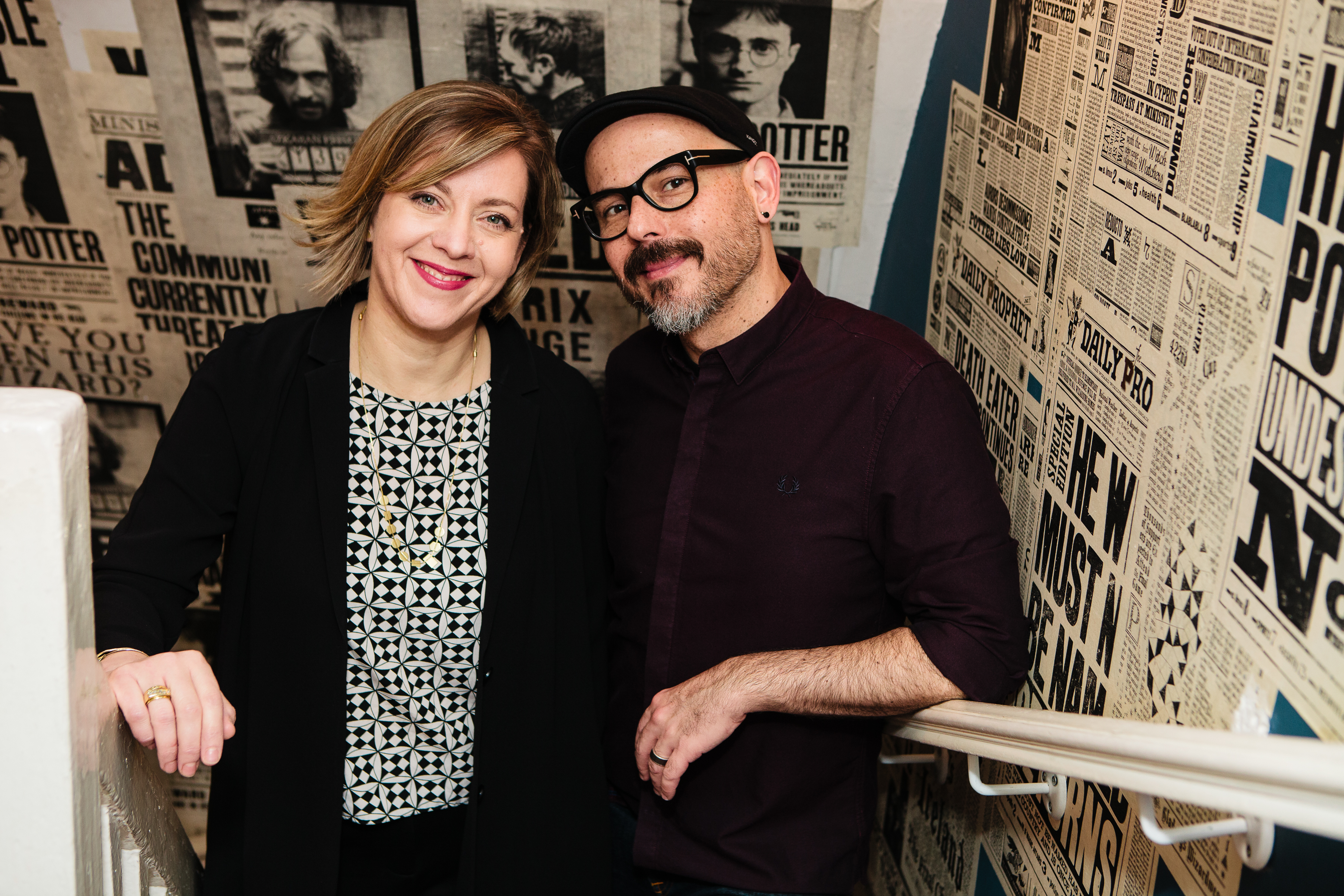There’s no single route into graphic design - and that’s particularly true for graphic prop designers working in the film industry. The role has only really emerged in the last 25 years, so when we started out we could never have predicted that we’d end up where we are today. We first joked about having our own design studio over a decade ago, partly because we didn’t want to stop working together. Now there’s a team of 18 design and administrative staff at MinaLima studio.
As designers for the Harry Potter and Fantastic Beasts films, it is our responsibility to create the visual identity of the Wizarding World. Often we’re making ’hero’ props, like The Marauder’s Map or The Daily Prophet newspapers, but it’s just as important to develop the incidental artwork that will dress every set: that’s what will make it feel concrete and convincing.
So how did it all begin? We met on the set of Harry Potter and The Chamber of Secrets back in 2001. Although we had both graduated in different disciplines (Mira: Theatre Design, Eduardo: Visual Communications) we shared a fascination with intricate props used to dress sets: bus tickets, magazines, maps, postcards… you name it!
Bringing the written story to life required a mixture of authenticity and unconventionality. The Wizarding World had to feel familiar - as if you could turn a corner and find it waiting for you - but also extraordinary. As a rule, we make each design recognisable but give it a twist. That could mean anything from sourcing vintage typography to create a sense of history, to using metallic foiling to make everything feel extra special. And, of course, we’re not normally designing as ourselves. One minute we could be Fred and George Weasley, generating packaging for their joke shop, the next, devising an official Ministry of Magic pamphlet. All in a day’s work!
Few designers have the opportunity to grow over the course of a single series in the way that we did. The Harry Potter films were set over seven years, so there were subtle shifts in the way the magical newspapers evolve, and in the types of props that characters encountered. Now, working on the Fantastic Beasts films which are rooted in specific times and places, we’re travelling back in time to reinvent some of our early designs for the 1920s!
We have always enjoyed taking on new challenges. We’ve engaged with other cinematic worlds, both fictional and historical, but also designed for a theme park (Diagon Alley for Universal Orlando Resort’s Wizarding World of Harry Potter), reimagined children’s stories for our Illustrated Classics range and created packaging for cosmetics brand Lush. We’ve gone from fashioning volumes for the Hogwarts shelves, to seeing our book designs in real-life bookshops; from creating packaging to supply Diagon Alley’s stores, to producing products for our very own shop. Whilst some of these tasks might seem very different, our work is always united by our passion for storytelling.
Setting up our gallery, House of MinaLima, has been a big adventure for us: we’ve just celebrated the House’s third birthday in London, and launched a year long pop up in Osaka this April. We’ve turned our hand to adapting our designs into prints and merchandise, but also hopefully shed a little light on the processes behind our artwork. We can’t get attached to any of our work on a film as we never know what will be cut, or make it into the shot, so it’s wonderful to be able to share props that don’t get seen or are on screen fleetingly.
What is our advice to designers just starting out? Gain as much experience as possible. It can be difficult to navigate an industry where a great deal of work experience is unpaid, but if you get a real insight into the field, hands-on experience is incredibly worthwhile - Eduardo actually started out as an intern on Harry Potter and The Chamber of Secrets!
Take inspiration from a variety of sources, and don’t be afraid to be a little unusual! We scour second hand bookshops, archives and flea markets, and find that sometimes the most surprising (or the least obvious!) bits of ephemera can turn out to be the most useful.
Above all, never underestimate how much you can learn from colleagues, friends and mentors. Teamwork will always be at the heart of film making, and we’ll hold onto that ethos wherever the studio takes us next.

